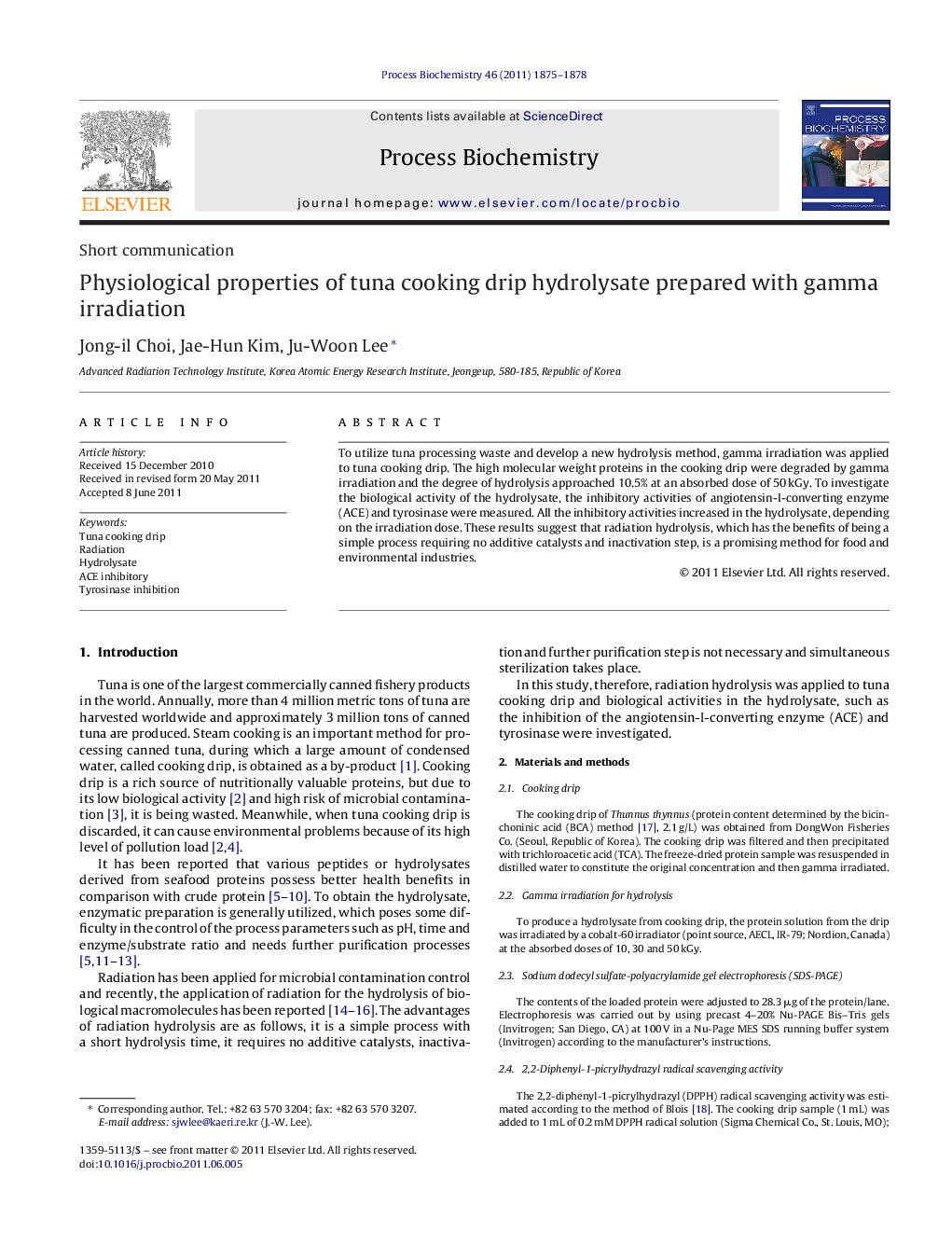| Article ID | Journal | Published Year | Pages | File Type |
|---|---|---|---|---|
| 10235494 | Process Biochemistry | 2011 | 4 Pages |
Abstract
To utilize tuna processing waste and develop a new hydrolysis method, gamma irradiation was applied to tuna cooking drip. The high molecular weight proteins in the cooking drip were degraded by gamma irradiation and the degree of hydrolysis approached 10.5% at an absorbed dose of 50Â kGy. To investigate the biological activity of the hydrolysate, the inhibitory activities of angiotensin-I-converting enzyme (ACE) and tyrosinase were measured. All the inhibitory activities increased in the hydrolysate, depending on the irradiation dose. These results suggest that radiation hydrolysis, which has the benefits of being a simple process requiring no additive catalysts and inactivation step, is a promising method for food and environmental industries.
Related Topics
Physical Sciences and Engineering
Chemical Engineering
Bioengineering
Authors
Jong-il Choi, Jae-Hun Kim, Ju-Woon Lee,
